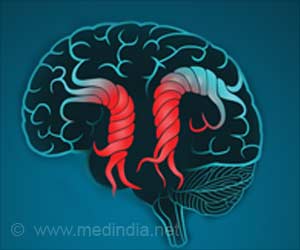Noise reduction should be a public health priority. Expanding our knowledge on the harmful effects of noise on health is essential for setting priorities and implementing effective policies and public health strategies focused on the prevention and control of diseases, including dementia.
Highlights
- Exposure to traffic noise for a long period is associated with higher dementia risk
- Transportation noise is the second worst environmental risk factor for public health
- Noise can also cause high blood pressure, which contributes indirectly to dementia risk
Transportation noise is considered the second worst environmental risk factor for public health in Europe after air pollution, and around a fifth of the European population is exposed to transportation noise above the recommended level of 55 dB (decibels).
Studies have consistently linked transportation noise to various diseases and health conditions, such as coronary heart disease, obesity, and diabetes. There is, however, little research on transportation noise and dementia and findings are inconsistent.
To address this, researchers investigated the association between long term residential exposure to road traffic and railway noise and risk of dementia among two million adults aged over 60 and living in Denmark between 2004 and 2017.
The researchers estimated road traffic and railway noise at the most and least exposed sides (or façades) of all residential addresses in Denmark.
They found 103,500 new cases of dementia during the study period.
These associations showed a general pattern of higher risk with higher noise exposure, but with a levelling off or even small declines in risk at higher noise levels.
Further analysis by type of dementia showed both road traffic and railway noise were associated with a higher risk of Alzheimer’s disease - up to 27% higher for exposure to road traffic noise of 55 dB and up to 24% higher for exposure to railway noise of 50 dB compared with less than 40 dB.
However, only road traffic noise was associated with an increased risk of vascular dementia, and not railway noise.
Possible explanations for an effect of noise on health include release of stress hormones and sleep disturbance, leading to a type of coronary artery disease, changes in the immune system and inflammation – all of which are seen as early events in the onset of dementia and Alzheimer’s disease.
This is an observational study so can’t establish cause, and the authors point to some limitations such as a lack of information about lifestyle habits, which can play a part in a person’s risk of developing dementia, and a lack of information on factors such as sound insulation in homes that might affect personal exposure to noise.
However, the study’s strengths included its large size, long follow-up time, and high quality assessment of noise exposure from two different transportation sources.
As such, the authors conclude: “If these findings are confirmed in future studies, they might have a large effect on the estimation of the burden of disease and healthcare costs attributed to transportation noise. Expanding our knowledge on the harmful effects of noise on health is essential for setting priorities and implementing effective policies and public health strategies focused on the prevention and control of diseases, including dementia.”
This large and comprehensive study has substantial strengths, but does not present the full picture of possible harm to the ageing brain associated with long term exposure to noise, for example from airports, industrial activities, or occupational exposure, say US researchers in a linked editorial.
Noise might also affect the risk of other chronic disorders such as high blood pressure, through which noise contributes indirectly to dementia risk, they add.
The widespread and substantial exposures to noise worldwide, the severity of associated health consequences, and the limited tools available for people to protect themselves, strongly support the WHO’s argument that “noise pollution is not only an environmental nuisance but also a threat to public health,” they write.
“Reducing noise through transportation and land use programs or building codes should become a public health priority,” they conclude.
Source-Eurekalert















